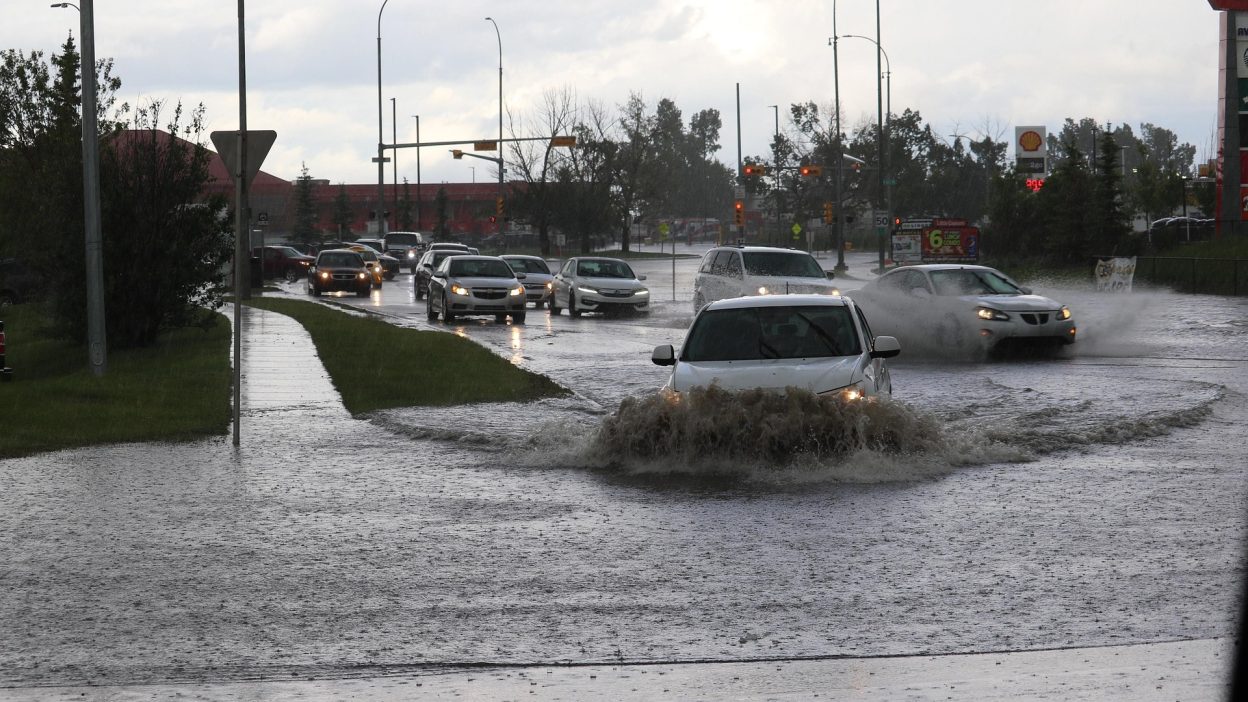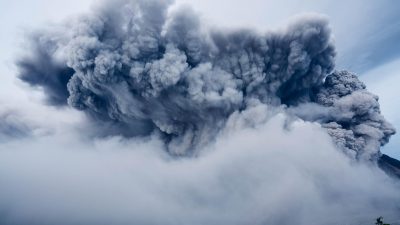A Catastrophe Exposed – Government Failures, Tragic Losses, and the Unlearned Lessons
The Great Flood of 1999 in India stands as one of the country’s most catastrophic natural disasters. Occurring from July to September, the disaster mainly impacted the eastern and eastern-central regions of India, with Orissa (now Odisha), West Bengal, and Bihar bearing the brunt of the devastation. Triggered by the monsoon rains combined with a devastating super cyclone that hit the coastal regions, the flood became a horrific event of biblical proportions. Over 10,000 people lost their lives, while more than 17 million individuals were displaced, with entire villages submerged under floodwaters. The destruction was widespread, affecting 12 states in total, with Orissa suffering the most severe losses. The monsoon rains that year were particularly intense, leading to record-breaking precipitation that overwhelmed riverbanks and flood defences.
The economic toll was equally catastrophic, with estimates of damage exceeding $2 billion. The floodwaters inundated vast agricultural lands, destroying crops and livelihoods, particularly in the rural heartlands of the affected states. The aftermath of the flood left many without homes, basic necessities, or clean drinking water, creating an ongoing humanitarian crisis. Besides the immediate loss of life, the disaster disrupted transportation and communications networks, making relief efforts difficult and slow. A majority of the affected regions were left without power, and many areas faced long-term challenges in rebuilding their infrastructure and restoring services to the public.
In addition to the human and economic costs, the 1999 Great Flood was marked by widespread criticism of the government’s response to the disaster. Despite early warnings from meteorological agencies about the potential for flooding, the national and state-level authorities were ill-prepared, with delayed evacuations, slow distribution of relief, and insufficient disaster preparedness at the local level. The lack of effective communication between government agencies and international aid organisations further exacerbated the suffering, leading to widespread accusations of corruption and mismanagement. The impact of this disaster remains a stark reminder of the vulnerabilities that India faces due to its monsoon patterns, poor infrastructure, and challenges in disaster management.
A Year of Disaster
The scale of the 1999 Great Flood in India was immense, with both immediate and long-term consequences that impacted millions of people. In total, over 10,000 lives were lost, a staggering figure that reflects the severity of the disaster. The flood affected over 17 million individuals across multiple states, with the worst-hit regions being Orissa, West Bengal, and Bihar. In Orissa alone, around 1,000 people lost their lives, and nearly 10 million people were affected. More than 500,000 homes were damaged or destroyed, and entire villages were submerged, leaving the affected populations without shelter or basic amenities. Thousands of hectares of farmland were washed away, disrupting the local economy, and causing widespread hunger and poverty.
The overall damage was estimated at over $2 billion, with significant destruction to infrastructure. Roads, bridges, communication lines, and power stations were severely impacted, making the delivery of relief aid a complex and difficult task. The agricultural sector, which many of these states heavily relied upon, was particularly hard-hit, with crops being destroyed and livestock perishing in the floodwaters. The flood’s extensive impact on both the human population and the economy led to a prolonged recovery process that lasted years, highlighting the enormity of the disaster and its far-reaching consequences on the nation’s future disaster preparedness and response strategies.
The Human Cost: Lives Lost and Families Shattered
- Over 10,000 people lost their lives
The flood was responsible for the tragic loss of over 10,000 lives, with the highest number of casualties recorded in Orissa, where thousands were swept away by the surging waters. Entire communities were wiped out, and many individuals drowned, trapped in their homes or caught in the fast-moving floodwaters. - Displacement of over 17 million people
The scale of displacement was staggering, with more than 17 million people forced to abandon their homes. Many took refuge in overcrowded relief camps, which lacked basic facilities such as sanitation, clean drinking water, and medical care, leading to further suffering. - Destruction of homes and livelihoods
More than 500,000 homes were completely destroyed or severely damaged in the affected regions. Families who once lived in peaceful rural and coastal communities found themselves homeless and vulnerable, with no access to their farms or sources of income, pushing many into long-term poverty. - Psychological and emotional toll on survivors
The psychological impact on survivors was profound, as families not only dealt with the physical destruction of their homes but also the grief of losing loved ones. Communities were left in despair, and the emotional scars of the disaster lingered long after the waters receded. - Widespread loss of livestock and crops
The flooding also resulted in the loss of vital livestock, which played a key role in many local economies. Thousands of cattle, goats, and poultry drowned, leaving families without their primary source of income or sustenance. Additionally, vast tracts of crops were destroyed, compounding the economic hardship.
How the 1999 Super Cyclone Added Fuel to the Fire
The 1999 Great Flood in India was exacerbated by an unforeseen and powerful super cyclone that intensified the already severe flooding. The cyclone, which formed off the Bay of Bengal, made landfall along the Odisha coastline just as the monsoon rains had already saturated the region. The combination of intense rainfall and the cyclone’s strong winds resulted in flash floods and widespread destruction, especially in coastal areas. The cyclone not only worsened the flooding but also disrupted rescue and relief operations by causing massive infrastructure damage, including downed communication lines and power outages.
This unusual combination of a cyclone and record-breaking rainfall made the 1999 flood a truly catastrophic event. The cyclone’s powerful winds pushed floodwaters into coastal towns, damaging homes and infrastructure that were already struggling under the weight of the heavy rain. The storm surged through the region with little warning, leaving the most vulnerable communities helpless in its wake. As a result, many affected areas faced a double disaster: the cyclone’s immediate destruction followed by relentless flooding, causing widespread panic and chaos.
The Controversies Behind the Great Flood
The aftermath of the 1999 Great Flood in India was marred by severe controversies surrounding the government’s response to the disaster. While the scale of the tragedy was undeniable, what shocked many was the delayed, disorganised, and often indifferent reaction from both national and state authorities. In Orissa (now Odisha), where the flood’s devastation was most severe, local authorities were criticised for their lack of preparedness. Despite receiving early warnings of heavy rainfall and the impending cyclone, the government failed to evacuate vulnerable communities in a timely manner. It was only after the floodwaters began to rise that officials scrambled to arrange relief, but by then, it was too late for many people who were left stranded without adequate help.
As the waters receded, the relief efforts continued to attract public outcry. The Bhubaneswar administration, which was tasked with coordinating relief in the worst-hit areas, was accused of mismanagement. Resources, such as food, clean water, and medical supplies, were either slow to arrive or misdirected to areas where they were not as urgently needed. Reports of corruption surfaced, alleging that funds allocated for disaster relief were misappropriated by local officials. In some cases, relief materials were said to be diverted to black markets or withheld from the most affected communities. As a result, many victims in Cuttack and Puri (major cities in Orissa) were left to fend for themselves, their cries for help ignored by the very people who were supposed to protect them. The disaster exposed severe flaws in India’s disaster management system, and the public anger over the government’s lack of accountability still lingers in the collective memory of those who endured the catastrophe.
The Poor State of Infrastructure and Planning in Flood-prone Areas
The 1999 Great Flood didn’t just highlight the power of nature; it also exposed a massive failure in India’s infrastructure and urban planning—failures that had been simmering for decades. As the floodwaters surged through regions like Orissa, West Bengal, and Bihar, it became painfully clear how ill-prepared these areas were to handle such a disaster. Despite being prone to annual monsoon floods, the government had consistently ignored the need for modern flood defences, such as effective levees and drainage systems. In Cuttack, for instance, poor drainage meant that floodwaters took days to recede, while the absence of flood barriers allowed rivers to breach their banks without resistance. This wasn’t just bad luck; it was a systemic failure of planning and neglect by local authorities.
But the problem went beyond just physical infrastructure—there was a glaring lack of foresight in urban development. In flood-prone cities like Bhubaneswar, the government allowed rapid urbanisation without any flood mitigation plans, paving over natural water retention areas and building on low-lying floodplains. This reckless approach led to even greater destruction, as the floodwaters had nowhere to go but into people’s homes. Bihar fared no better, with decades of deforestation and riverbed encroachments making the flood-prone areas more vulnerable. The bitter irony is that these regions had long been aware of their susceptibility, but the political will to invest in flood control measures was sadly absent. The question remains: How many more lives need to be lost before the government and urban planners realise that when it comes to disaster preparedness, the price of inaction is far too high?
The 1999 Great Flood vs. The 2004 Tsunami
When people talk about natural disasters in India, the 2004 Indian Ocean Tsunami often dominates the conversation. But was it truly more devastating than the 1999 Great Flood? While both disasters claimed thousands of lives and wreaked havoc across multiple regions, the scale, impact, and response tell two very different stories—one being a sudden catastrophe, the other a slow-moving yet relentless tragedy.
The 2004 Tsunami, triggered by a massive undersea earthquake, killed approximately 10,000 people in India within just a few hours. Entire coastal communities, particularly in Tamil Nadu and the Andaman & Nicobar Islands, were wiped off the map. In contrast, the 1999 Great Flood was a prolonged disaster, lasting for months, submerging thousands of villages, and ultimately leading to over 10,000 deaths, primarily in Orissa, Bihar, and West Bengal. Unlike the tsunami, where death was swift, the flood caused prolonged suffering—millions were stranded without food, clean water, or shelter, leading to starvation, disease outbreaks, and secondary deaths long after the waters receded.
What makes the 1999 Flood even more horrifying is that it was a predictable disaster—meteorological agencies had issued warnings, yet the government failed to act. In contrast, the 2004 Tsunami was an unexpected catastrophe, with no early warning systems in place. The response to the tsunami was swift and international aid poured in immediately. However, for the 1999 flood victims, relief was slow, mismanaged, and corrupt, leaving millions to fend for themselves. If one disaster was nature’s fury, the other was human negligence. The question remains: Should a flood, which happens almost every year in India, have been allowed to turn into one of the worst humanitarian crises in the country’s history?
How India Responded to the 1999 Great Flood
The response to the 1999 Great Flood was a chaotic mix of delayed government action, overwhelmed disaster relief agencies, and an outpouring of aid that often failed to reach the people who needed it most. With over 17 million people displaced and entire villages submerged, the need for immediate rescue operations was critical. However, the National Disaster Management system was severely underprepared, lacking both manpower and resources to handle a disaster of this magnitude. In Orissa, one of the worst-hit states, flood victims were left stranded for days without food or clean water as government agencies struggled to navigate the destroyed road networks and washed-out bridges. Helicopter rescues were limited, and in many places, villagers had to cling to trees and rooftops for survival, waiting for help that often arrived too late.
International aid organisations and NGOs stepped in to provide relief, but even this effort was marred by corruption and mismanagement. Reports emerged of relief materials being hoarded by local officials or distributed unfairly, leaving the most vulnerable communities with nothing. The lack of coordination between state and central government agencies further worsened the crisis. In many areas, relief camps were overcrowded and unsanitary, leading to outbreaks of waterborne diseases like cholera and dysentery, adding yet another layer of suffering. The 1999 flood exposed the glaring inefficiencies in India’s disaster response system, proving that without proper planning and execution, even the largest rescue efforts can fail those who need them most.
A Nation Struggles to Rebuild
The devastation caused by the 1999 Great Flood did not end when the waters receded. In many ways, the true suffering began after the disaster, as millions of survivors were left to rebuild their shattered lives without government support. In Orissa, Bihar, and West Bengal, where the damage was most severe, entire villages had been erased from the map. Roads, bridges, and railway lines were washed away, cutting off vital supply routes and making it nearly impossible for aid to reach remote areas. Many flood victims, having lost everything, were forced to live in makeshift shelters for months, surviving on scarce food rations and unclean water.
One of the biggest challenges in the aftermath of the flood was the economic devastation it caused. Agriculture, which was the backbone of these flood-affected states, was completely destroyed. Fields that once grew rice, wheat, and pulses were now covered in layers of silt and debris, making farming impossible for the next few seasons. With no crops to harvest and livestock drowned in the floodwaters, thousands of farmers fell into crippling debt, pushing many to the brink of suicide. Small businesses and industries also suffered as trade routes were blocked, forcing many to shut down permanently. In many regions, the flood created a generation of climate refugees, people who could no longer live in their hometowns and were forced to migrate to urban slums in cities like Bhubaneswar, Kolkata, and Patna, where they struggled to find stable work and housing.
The flood also triggered a severe health crisis. With stagnant floodwaters lingering for weeks, mosquito-borne diseases like malaria and dengue spread rapidly, claiming even more lives. Cholera and dysentery outbreaks swept through the overcrowded relief camps due to poor sanitation, hitting children and the elderly the hardest. The government’s failure to provide long-term rehabilitation plans meant that many survivors were left to fend for themselves, trapped in poverty, debt, and disease. While the world moved on, the people of Orissa, Bihar, and West Bengal had to pick up the pieces, with little hope of ever recovering fully. The 1999 Great Flood was not just a natural disaster—it was a human-made catastrophe that exposed India’s lack of preparedness, poor governance, and the devastating consequences of ignoring climate change.
Lessons Learned
The 1999 Great Flood should have been a wake-up call for India. The disaster exposed the nation’s weak disaster preparedness, corrupt relief distribution, and outdated infrastructure—issues that could have been fixed to prevent future catastrophes. But more than two decades later, how much has really changed? Every monsoon season, the same story unfolds: cities and villages flood, people lose their homes, governments scramble to respond, and yet, little is done to prevent the next disaster. Orissa, Bihar, and West Bengal, the worst-hit states in 1999, still experience deadly floods nearly every year.
After the flood, there was a lot of talk about improving India’s disaster management system, and some steps were taken. The National Disaster Management Authority (NDMA) was eventually set up in 2005, partly in response to the failures of 1999. Evacuation protocols, early warning systems, and cyclone shelters were introduced in coastal areas. But despite these improvements, corruption, political indifference, and poor urban planning continue to make floods a recurring nightmare. In 2013, the Uttarakhand floods killed over 5,000 people. In 2018, Kerala saw its worst flood in nearly a century, displacing over 1 million people. Every year, major cities like Mumbai, Chennai, and Patna come to a standstill due to poor drainage and reckless urban expansion.
So, did India truly learn anything from 1999? The reality is harsh: natural disasters don’t kill people—poor governance does. Until India stops treating floods as one-time tragedies and starts planning for the future, millions will continue to suffer, year after year. The question remains: How many more lives need to be lost before real change happens?
Conclusion
The 1999 Great Flood was not just a natural disaster—it was a man-made catastrophe fuelled by poor governance, corruption, and lack of preparedness. With over 10,000 deaths and 17 million displaced, the flood exposed India’s fragile disaster response system, failed urban planning, and political indifference. Despite early warnings, authorities reacted too late, and relief efforts were slow, mismanaged, and unfairly distributed. The aftermath left survivors in poverty, debt, and disease, with little government support for rebuilding their lives. While some improvements have been made, recurring floods in Mumbai, Bihar, and Kerala prove that India has yet to truly learn from this tragedy. Until flood control, urban planning, and disaster response become national priorities, history will keep repeating itself—at the cost of thousands of lives.
FAQs on the 1999 Great Flood in India
- What caused the 1999 Great Flood in India? The flood was triggered by extreme monsoon rains, which were worsened by a super cyclone that struck Odisha. The combination of heavy rainfall, inadequate drainage systems, and the absence of flood barriers led to massive water accumulation, submerging entire villages and cities.
- How many people died and how many were affected? Over 10,000 people tragically lost their lives, making it one of India’s deadliest floods. More than 17 million people were affected, with over 500,000 homes destroyed, leaving millions of people homeless and struggling for survival.
- Why was the government’s response to the disaster criticised? The government was woefully unprepared despite early warnings. Evacuations were delayed, relief efforts were mismanaged, and corruption led to the unfair distribution of aid. Many victims waited for days without help, and thousands suffered due to a lack of food, water, and medical care.
- What were the long-term impacts of the flood? The flood caused economic devastation, with agriculture ruined and thousands of farmers falling into debt. Infrastructure was destroyed, and diseases such as cholera and malaria spread rapidly. Many survivors never fully recovered, being forced to migrate or live in poverty.
- Has India improved its disaster response since 1999? While disaster management has improved, with the formation of the NDMA (National Disaster Management Authority) in 2005, floods continue to wreak havoc every year. Poor urban planning, corruption, and slow relief efforts continue to make monsoon floods deadly, proving that India still has a long way to go.
References:
1999 Super Cyclone In Odisha 25 Years Of The Most Disastrous Natural Disaster That Shook India
India: Floods – Jul 1999
Flood Disaster in India: An Analysis of Trend and Preparedness
YT links:
India: Battling deadly floods | WION Wideangle
1999 Super Cyclone: Revisiting The Devastating Cyclonic Storm That Took Countless Lives In Odisha




